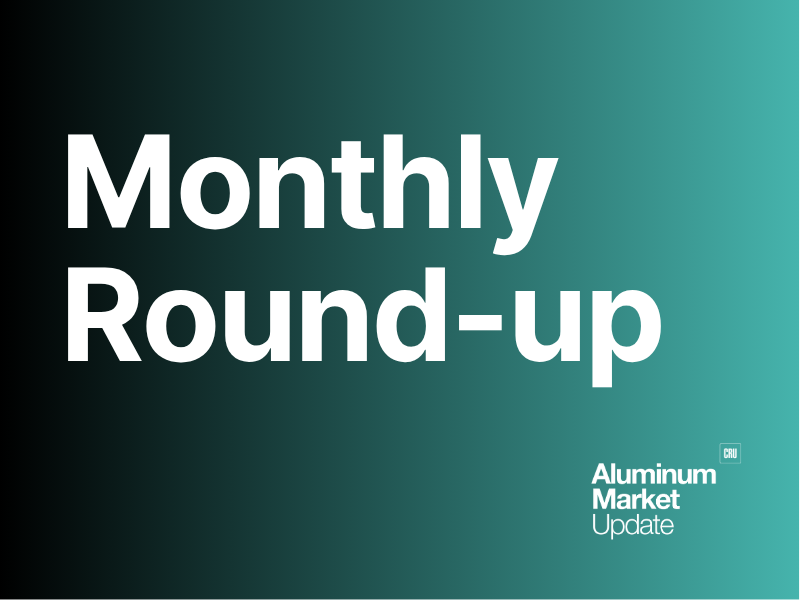Global Trade

February 23, 2025
The possible shift in U.S. aluminum imports
Written by Gabriella Vagnini
The 25% tariff on aluminum imports, implementing in Q1 2025, has completely shifted global trade flows. With country specific exemptions gone, Canada and Mexico are feeling the hit. With the playing field now level, the assumption was that the UAE and India would fill the gap, but now, Ukraine may be the wild card that entered the conversation in a major way.
And here’s the biggest twist, while Biden pushed for stronger trade ties with Canada and the EU, Trump’s return has thrown that plan out the window. Instead, his administration is floating a game changing move: sourcing alumina from Ukraine, potentially replacing Canada and Mexico as the U.S.’s primary raw material supplier.
Why Ukraine? And why now?
For years, the U.S. has relied on Canada for over half of its aluminum imports, with Mexico, the UAE, and India making up the rest. But with tariffs leveling the playing field, U.S. buyers are now scrambling for alternatives.
Then, out of nowhere, National Security Advisor Mike Waltz makes a major statement:
If Ukraine restores a key aluminum processing facility, it could produce enough alumina to meet all of America’s aluminum needs, eliminating reliance on Canada, Mexico, and even the UAE. Find full briefing, here.
If this actually happens, it would completely shift U.S. aluminum supply chains, not just because of price, but because of who controls production and trade agreements moving forward.
Trump-Putin: Is this more than just aluminum?
Trump has made it clear he wants to bring Putin to the table and broker a peace deal between Russia and Ukraine. But now, with Ukraine’s alumina production in play and the rare earth mineral deal Trump offered to them, this isn’t just about peace, it’s about control.
- Historically, Ukraine’s Mykolaiv Alumina Refinery supplied roughly 20% of Rusal’s alumina needs.
- If Trump secures a peace deal, Ukraine’s alumina could flow into Rusal’s smelters in Russia, then be exported as primary aluminum (P1020) to the U.S.
- If that happens, Trump effectively takes full control of America’s aluminum supply, shutting out Canada, which has profited off the U.S. for years, even under tariffs.
- The London Metal Exchange (LME) will still allow Russian aluminum to be warranted on the LME, the metal just has to be produced on or before April 2024. Last heard, there is roughly 500,000mt in warehouses.
- Trump’s ultimate goal is rare earth minerals, of which he’s trying to strike a deal with Ukraine, however, Putin just came in and offer Trump the same deal, while Ukraine is pondering and complaining about the deal.
- Side note- The EU had just offered a deal to Ukraine for the rare earth minerals and added that they will make it a fair deal for both sides.
Let’s be real: Even when tariffs were put on Canadian aluminum, Canada just passed the cost onto buyers and kept its market share. Moving supply chains to Ukraine and Russia puts Trump in full control of America’s aluminum sourcing, instead of Canada pocketing the profits no matter what tariffs were applied.
Energy costs, the UAE, and the possible smelting dilemma
Energy is everything in aluminum production.
- The U.S. – Smelters pay sky-high electricity rates making domestic aluminum too expensive to produce.
- The UAE – They have cheap natural gas and renewables, keeping production costs low, but water scarcity is a growing concern.
- Ukraine – If the U.S. helps restore their alumina processing operations, they could lock in long-term supply deals at a better price than Canada, while also pulling Ukraine further into the U.S. economic sphere.
Key Stat: Energy makes up 40% of aluminum production costs, whoever controls power costs controls the market.
What about the UAE’s water problem?
Yes, the UAE has cheap energy, but water is another issue entirely.
- Over 94% of the UAE’s water comes from desalination, which is expensive, energy intensive, and not exactly eco-friendly.
- Aluminum smelting requires massive amounts of water for cooling, and relying on desalination only adds another cost layer.
- UAE water demand grew 35.8% from 2008-2012, making industrial use a growing challenge.
What’s the bottom line? While the UAE is a short-term player, its long-term ability to supply the U.S. aluminum market may raise red flags due to something as simple as water.
What this means for the U.S. aluminum market
This isn’t just about sourcing cheaper aluminum, it’s about restructuring the entire supply chain.
- If Trump locks in Ukraine’s alumina supply, Canada and UK producers lose leverage, fast.
- If Ukraine alumina gets smelted in Russia, the U.S. could replace Canada entirely, and Trump would control America’s entire primary import flow.
- If the U.S. shifts fully to Ukraine, global trade routes and pricing structures will be completely rewritten.
And let’s not forget: Canada has been cashing in on U.S. aluminum demand for years, even when tariffs were in place. Moving sourcing to Ukraine and Russia (via a peace deal) puts Trump in full control of America’s aluminum supply.
The U.S. aluminum market isn’t just shifting; it’s being completely restructured. And if Trump closes a deal that secures Ukraine’s alumina and routes it through Russian smelters, Canada is out, Trump is in control, and the U.S. aluminum industry enters a new era.
Now, most people in the industry doesn’t see this as a possibility, but let’s face it, being less than two months into 2025, Trump has already rattled the industry, and we haven’t even hit Q1 yet.






